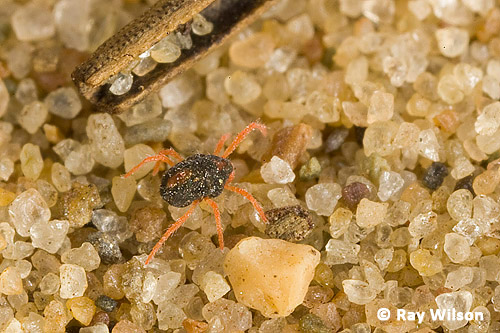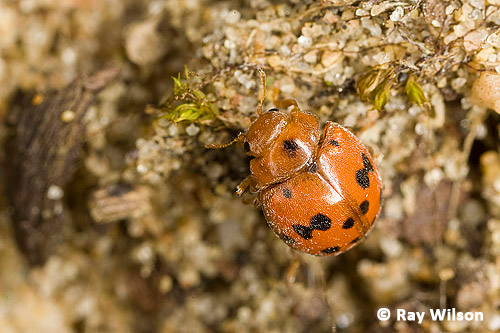
- Home
- Photography Tours
- Diary / Blog
- Galleries
- Foreign Trips
- Tasmania 2016
- NE Queensland 2016
- Western Alps 2016
- NE Spain 2016
- Australia's Wet Tropics 2015
- Australia's Top End 2015
- SW Australia 2015
- Switzerland 2015
- Andalucia 2015
- Belize 2015
- Australia 2014
- Switzerland 2014
- Belize 2014
- Bahama Islands 2014
- Switzerland 2013
- Ecuador 2012-2013
- Florida 2011-2012
- Vancouver Island 2011
- Australia 2010
- Peru 2008
- Bulgaria 2007
- Lesvos 2006
- California 2006
- New Zealand 2005
- Extremadura 2005
- Goa, India 2004
- The Gambia 2003
- About
March 2009
I bought myself a new toy this month: the Canon MP-E 65mm macro, a highly specialized lens which can only be used for high powered macro photography.
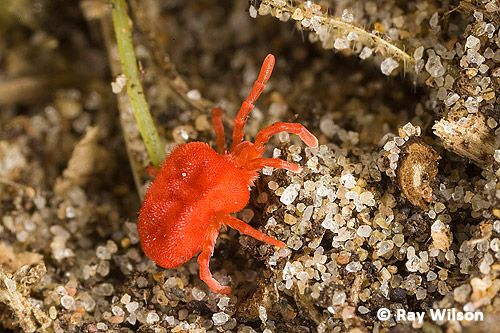
Velvet Mite (Eutrombidium rostratus) - 3x life-size
The lens can magnify objects up to 5 times life-size. This is not to be confused with the 5x optical zoom advertised on many compact cameras. Life-size, in this case, means that an object 1mm long will cover 1mm of the camera's sensor. Therefore, at full 5x magnification the field of view with a 28mm sensor, such as on my 1D mkII, is only 5.6mm! Cameras with smaller sensors, such as the 40D, will get frame filling images with even smaller objects.
The tiny springtails on the moss "flower" below are about the size of a pinhead and are barely visible to the naked eye.
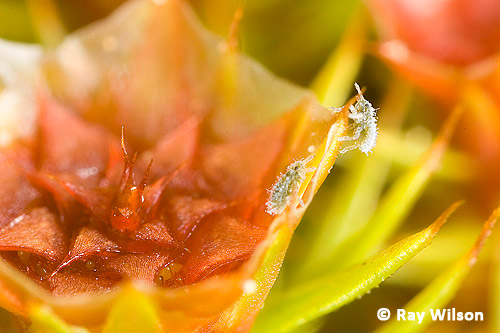
tiny springtails on a male Polytrichium juniperinum inflorescence (5x life-size)
The downside to using such high magnification is the depth of field is extremely narrow. At 5x, depth of field is only 0.13mm at f8 (the lens has a minimum aperture of f16 but at maximum magnification the quality at f16 is poor). Even at 1x the depth of field is only 1.1mm. Focusing hand-held with such a small margin for error is a major challenge!
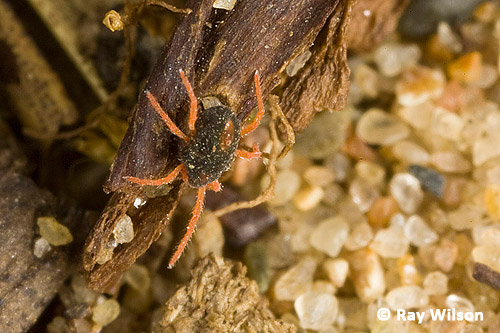
small mite walking across sand
small mite walking across sand
One way to help overcome the depth of field problem is to use a technique called z-stacking. This involves taking a series of images, each one focused on a slightly different plane, then merging the in-focus parts together to give the illusion of greater depth of field.
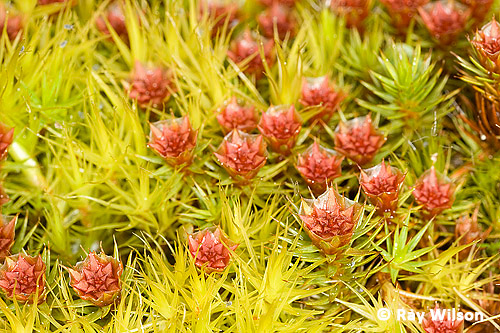
The above image is the first of 5 photos used to create the composite below. By using a dedicated z-stacking program (I used Helicon Focus) the composite can be generated in under 1 minute.
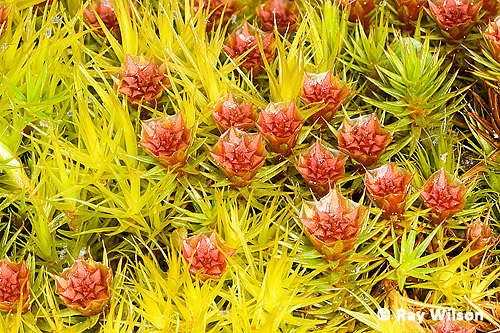
Polytrichium juniperinum - a z-stacked composite generated from 5 separate photos (1x life-size)
Z-stacking is, however, not easy when taking hand-held macros. Not only do you need to be able to take a series of acurately focused images but the framing of the subject must be as close as possible to identical in all the images in order for the program to be able to align the images acurately without generating a lot of artifacts and halos. Due to these restrictions, the technique can only be used on static, motionless subjects.
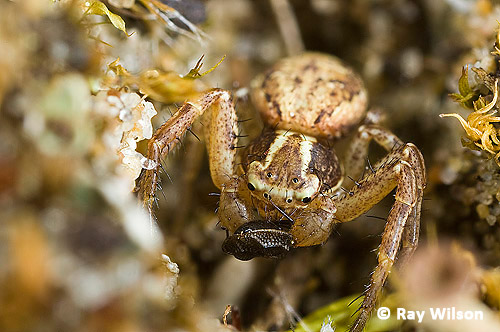
Xysticus cristatus - a z-stacked composite generated from 3 separate photos (3x life-size)
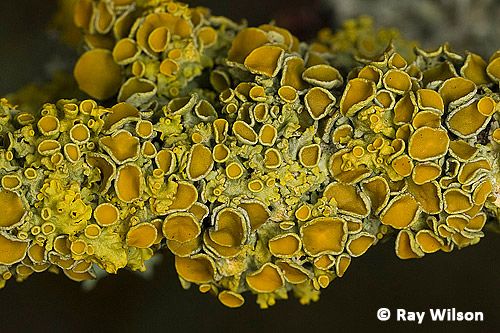
Lichen covered branch at 1x life-size
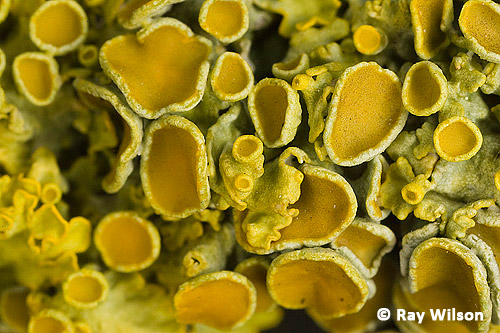
The same lichen as above at 3x life-size
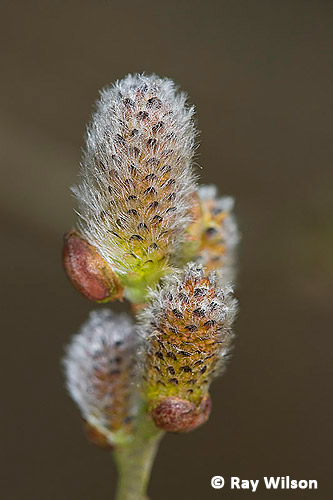
Sallow (Salix caprea) catkins |
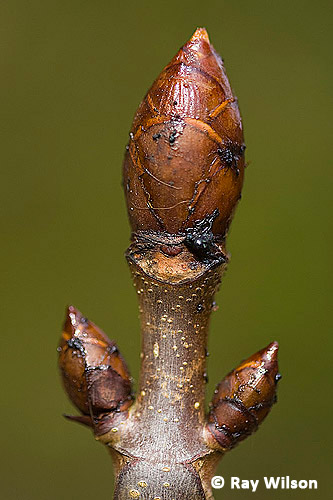
|
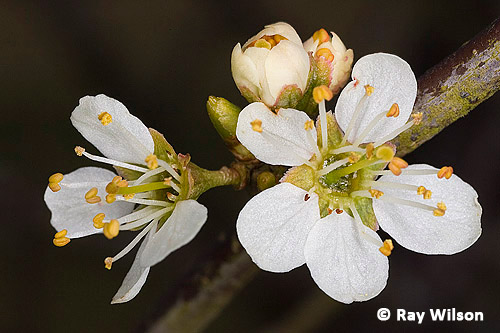
Hawthorn (Crataegus monogyna) blossom
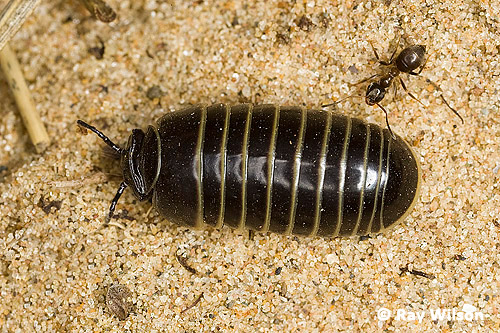
Ant (Lasius niger) investigating a pill millipede (Glomeridae sp.) - 1x life-size
When they feel threatened, Pill Millipedes roll up into a tight ball (see below). They are differentiated from pill woodlice by having two pairs of legs to each body segment compared to the woodlice's one pair per segment.
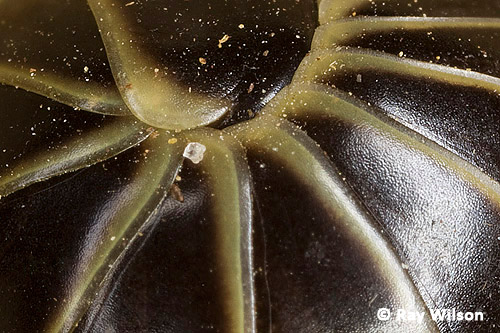
pill millipede (Glomeridae sp.) - when threatened they roll into a ball (3x life-size)
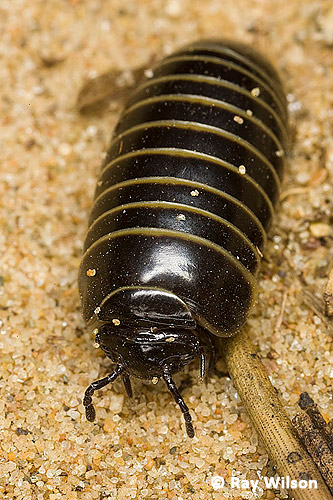 pill millipede (Glomeridae sp.) |
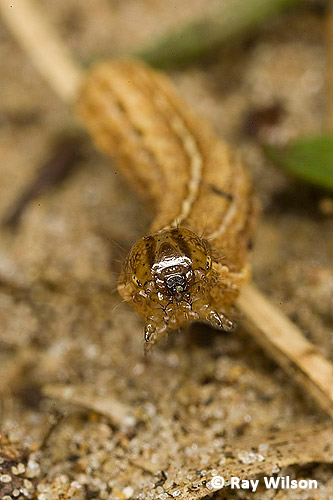 Square-spot Rustic (Xestia xanthographa) caterpillar |
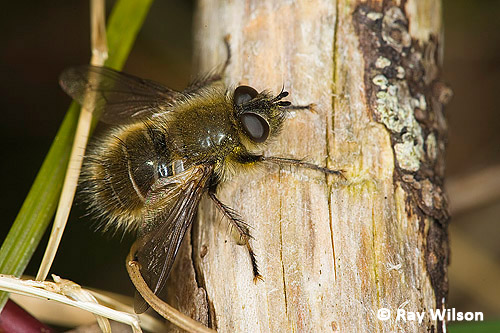
Tachina ursina
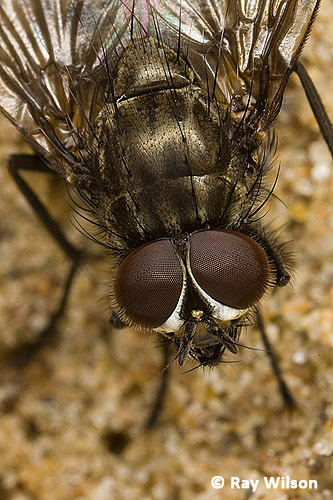
Fly close-up (Muscidae sp.)
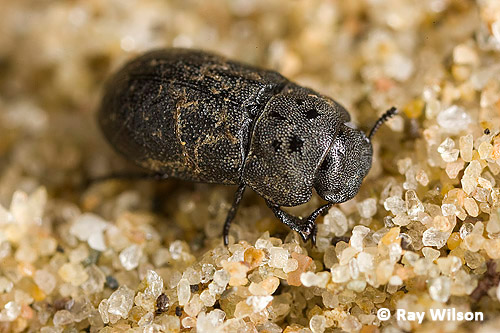
Melanimon tibialis (Tenebrionidae)
(Nov. 2012 update: Thanks to Stephen Thorpe for identifying this for me)
24-spot Ladybird (Subcoccinella 24-punctata)
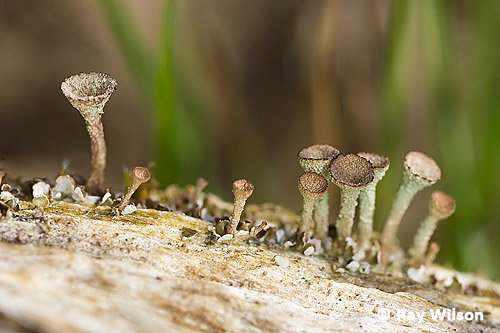
Cup lichen
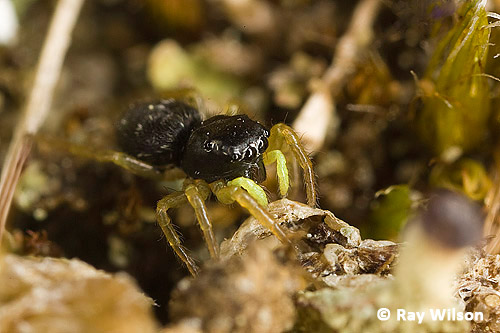
Yellow-legged Jumping Spider (Heliophanes flavipes)
Ray Wilson owns the copyright of all images on this site.
They may not be used or copied in any form without prior written permission.
raywilsonphotography@googlemail.com
